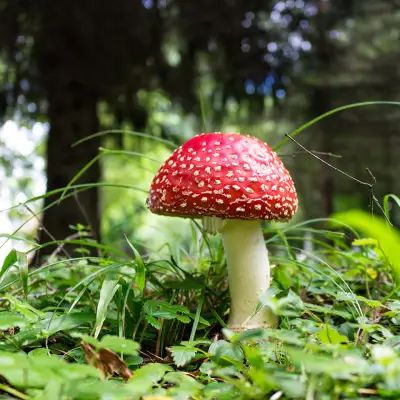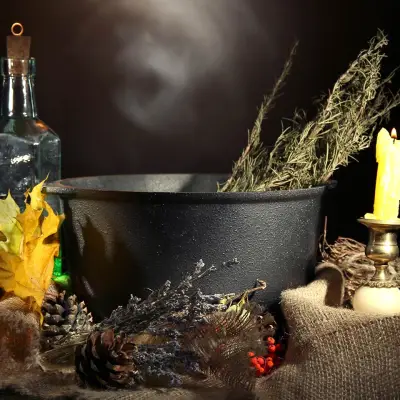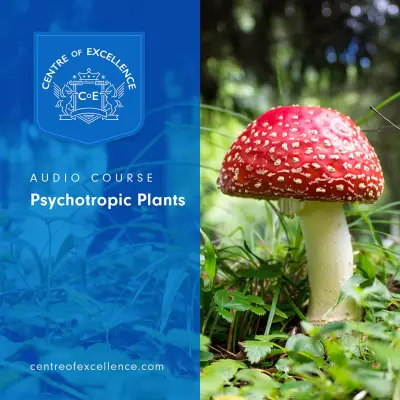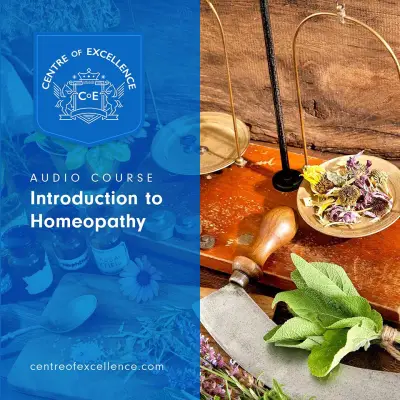If you've found yourself researching pennyroyal tea, you're likely looking for natural ways to support your health. With a long history in folk medicine, pennyroyal has sparked both interest and controversy over the years. But what exactly is it? What are the benefits and potential risks? Let’s explore this unique herb and whether its benefits outweigh its side effects.
This article is for informational purposes only and is not a substitute for professional medical advice, diagnosis, or treatment. Pennyroyal can cause serious side effects, some of which can cause serious harm or risk to life. Always consult with your GP or a qualified healthcare professional before starting any new herbal remedies, especially if you’re pregnant, breastfeeding, taking medication, or managing a health condition.
Jump to:
- What is Pennyroyal Tea?
- The Benefits of Pennyroyal Tea
- What Types of Pennyroyal Tea Can You Drink?
- How Much Pennyroyal Tea Should You Drink, and When?
- The Best Time to Drink Pennyroyal Tea
- What Are the Side Effects of Pennyroyal Tea?
- Who Should Avoid Pennyroyal Tea?
- Is Pennyroyal Tea Safe for Long-Term Use?
- Frequently Asked Questions About Pennyroyal Tea
- Study Our Master Herbalist Diploma for £29
Recommended for you!
Best SellersWhat is Pennyroyal Tea?
Pennyroyal tea is a herbal infusion made from the leaves of the pennyroyal plant, a type of mint. There are two main species: European pennyroyal (Mentha pulegium), also known as English pennyroyal mint, and American or false pennyroyal (Hedeoma pulegioides). Both have been used in traditional herbalism, but it’s the European variety that’s most commonly associated with pennyroyal tea.
The pennyroyal mint plant, particularly Mentha pulegium, has a strong, pungent aroma similar to spearmint, but it's smaller and lower-growing. This plant grows in moist areas and can be found in the wild or cultivated, especially in herb gardens across the UK.
Pennyroyal tea has been traditionally brewed from dried or fresh pennyroyal leaves, valued for their soothing and stimulating properties. If you're wondering how to distinguish between mint and pennyroyal, look for small, oval leaves and clusters of lilac flowers.
The Benefits of Pennyroyal Tea

Despite its cautionary reputation today, pennyroyal tea has a long-standing presence in herbal medicine. Here are some of the most commonly cited benefits:
1. Digestive Support
Pennyroyal tea has been used as a traditional remedy to soothe digestive issues like bloating, cramping, and indigestion. Its minty compounds may help relax the muscles in your digestive tract, reducing discomfort after meals.
2. Relief from Menstrual Cramps
One of the more historical uses of penny royal herb was to support women during menstruation. It was believed to help regulate the menstrual cycle and relieve cramping. However, modern evidence is limited, and safety concerns make this use controversial.
3. Respiratory Aid
Because of its menthol-like aroma, pennyroyal has been used as an expectorant. Inhaling the steam or sipping the tea may help clear mucus and soothe a congested chest or cough.
4. Insect-Repellent Properties
Pennyroyal has a strong scent that naturally repels insects. In the past, people would crush pennyroyal leaves and rub them on their skin or hang them around their homes to deter fleas and mosquitoes.
5. Potential Antimicrobial Effects
Some studies suggest that compounds in pennyroyal oil may have antimicrobial properties. While this doesn’t necessarily translate directly to tea, it has contributed to its use in topical folk remedies.
What Types of Pennyroyal Tea Can You Drink?
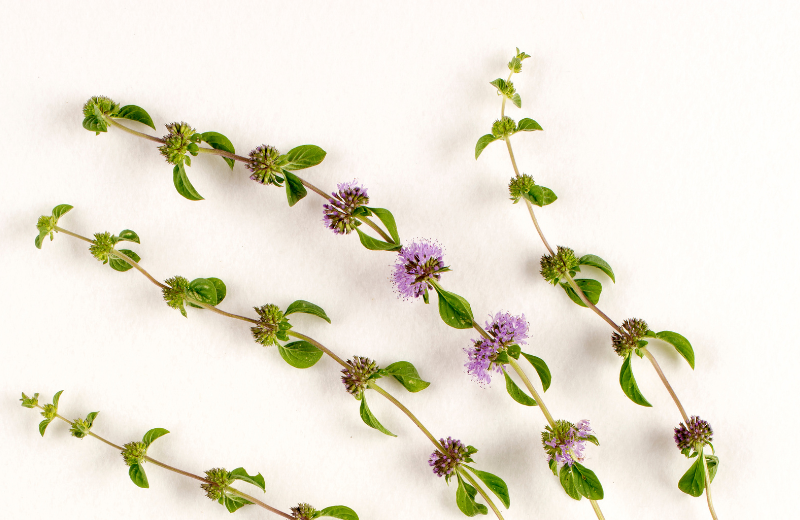
You’ll often find two main varieties on the market: English pennyroyal mint (European) and false pennyroyal (American). The European version, Mentha pulegium, is most commonly used in teas.
It's important not to confuse it with other types of mint like peppermint or spearmint. Regular mint varieties are widely consumed and safe in food and drinks. Pennyroyal, by contrast, contains a compound called pulegone, which can be toxic in high doses.
Pennyroyal is available in various forms:
- Dried pennyroyal leaves for tea
- Pennyroyal tinctures
- Pennyroyal oil (for external use only—never ingest this)
How Much Pennyroyal Tea Should You Drink, and When?
If using dried leaves, herbalists typically recommend no more than half a teaspoon of dried pennyroyal steeped in a cup of hot water; however, even this amount is debated. It’s strongly advised to consult a qualified herbalist or healthcare provider before using pennyroyal tea, especially if you plan to take it regularly.
The Best Time to Drink Pennyroyal Tea
There’s no universal best time to drink pennyroyal tea, but historically it was taken:
- After meals to support digestion
- At the start of a menstrual cycle to help ease cramping
- In the evening to promote relaxation
However, due to its safety concerns, you should be very cautious and avoid making it part of your daily routine unless under professional supervision.
What Are the Side Effects of Pennyroyal Tea?

Although Pennyroyal Tea offers some potential benefits, it can be dangerous if misused. Potential side effects include:
- Nausea or vomiting
- Abdominal pain
- Dizziness or confusion
- Liver damage
- Convulsions (in high doses)
These effects are mainly linked to the presence of pulegone, a naturally occurring chemical in pennyroyal that is toxic in large amounts.
Who Should Avoid Pennyroyal Tea?

You should avoid pennyroyal tea if you fall into any of the following categories:
- Pregnant or breastfeeding: Pennyroyal has been traditionally used to induce menstruation and can cause uterine contractions. It may lead to miscarriage.
- Children: Not safe under any circumstance.
- People with liver or kidney problems
- Anyone taking medications that affect the liver
- Pet owners: Pennyroyal is toxic to cats and dogs. Even topical products made from penny royal oil can be harmful if pets lick them.
Is Pennyroyal Tea Safe for Long-Term Use?
Long-term use of pennyroyal plant UK products, especially tea or oil, is not recommended. The risk of liver damage and other toxic effects increases with frequent use.
Even short-term use should be approached with extreme caution and only under the guidance of a qualified professional.
Recommended for you!
Best SellersFrequently Asked Questions About Pennyroyal Tea
Is pennyroyal tea a real thing?
Yes, but it is much less commonly consumed today due to safety concerns. It still exists in traditional herbal practice, though with strong warnings and limited modern use.
What is the magical use of pennyroyal?
In folklore and magical traditions, pennyroyal is associated with protection, strength, and warding off evil. Some also believed it could enhance psychic awareness and cleanse negative energy from a space.
Is pennyroyal plant edible?
Technically, yes, but due to the high risk of toxicity, it is not considered safe for culinary use. Even small amounts can be harmful if not prepared or dosed correctly.
Where can you grow pennyroyal?
Pennyroyal grows best in moist, well-drained soil and partial sun. It can spread quickly, so many gardeners choose to grow it in pots to contain its growth.
Study Our Master Herbalist Diploma for £29
If you’ve found yourself fascinated by the potential of pennyroyal tea and other natural remedies, why not deepen your understanding? Whether you're a beginner or looking to expand your knowledge, Centre of Excellence offers a comprehensive Master Herbalist Diploma Course, designed for people of all levels.
The course covers everything from herb identification and preparation to building herbal blends for specific emotional and physical needs. Follow the link to access the course for just £29!
